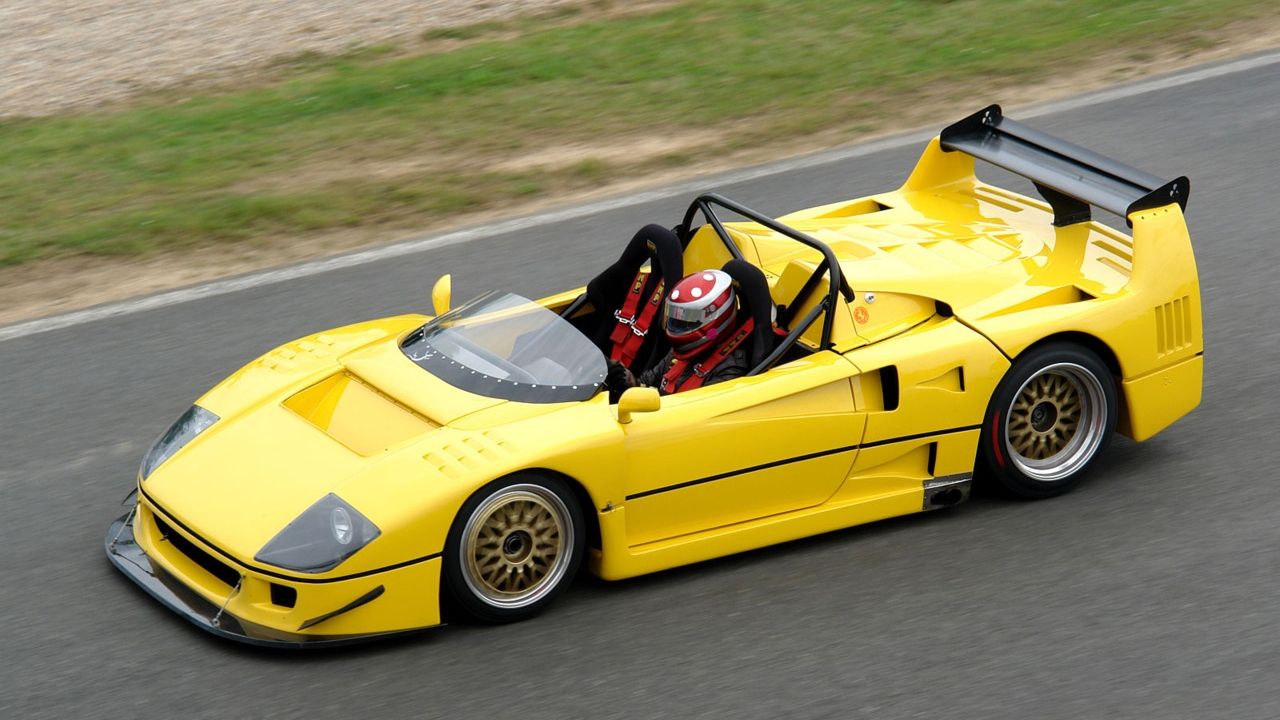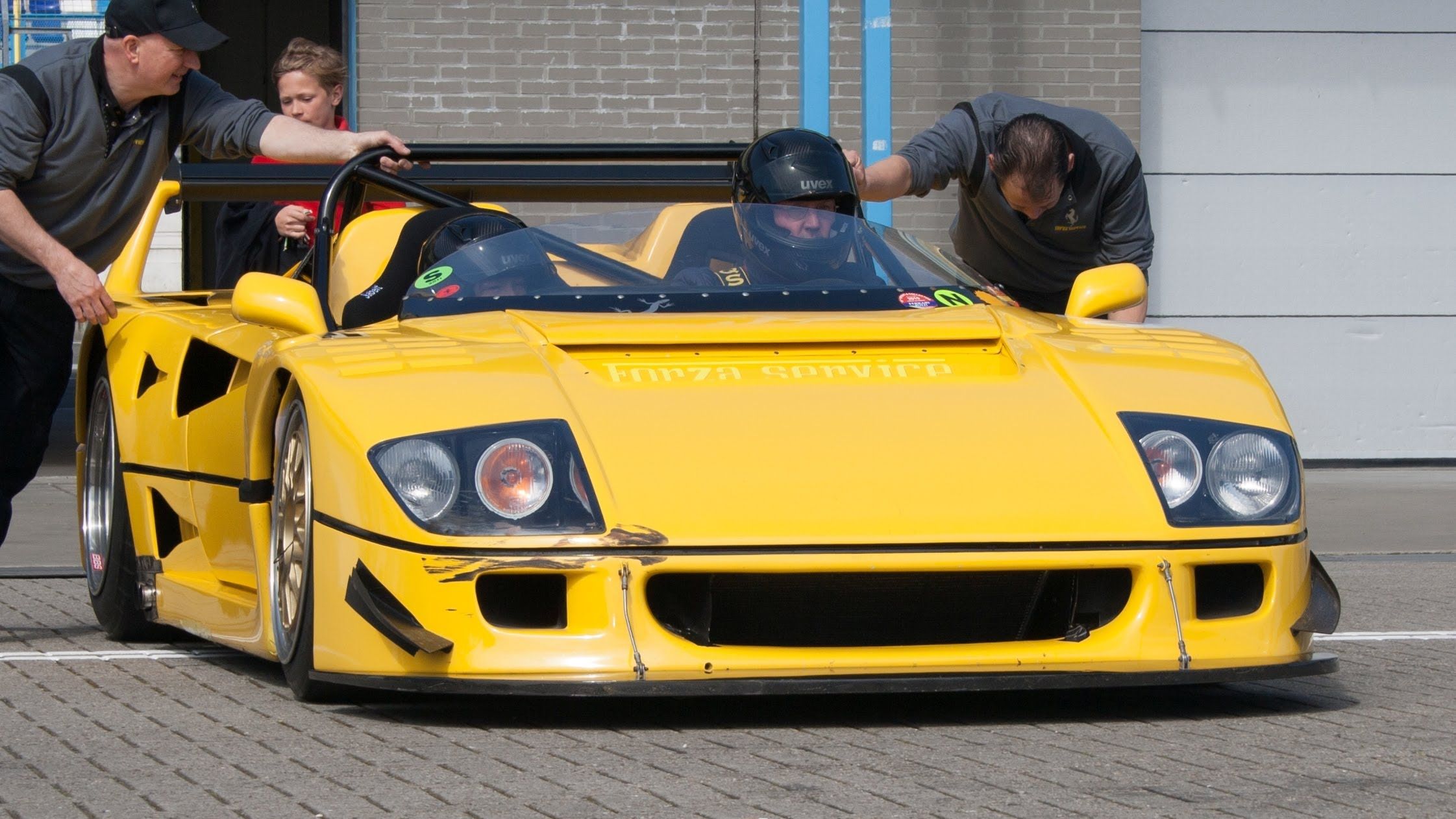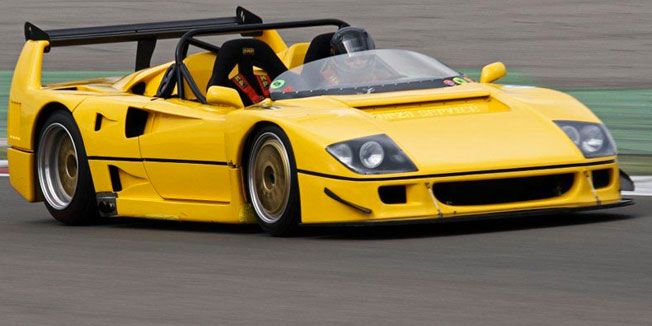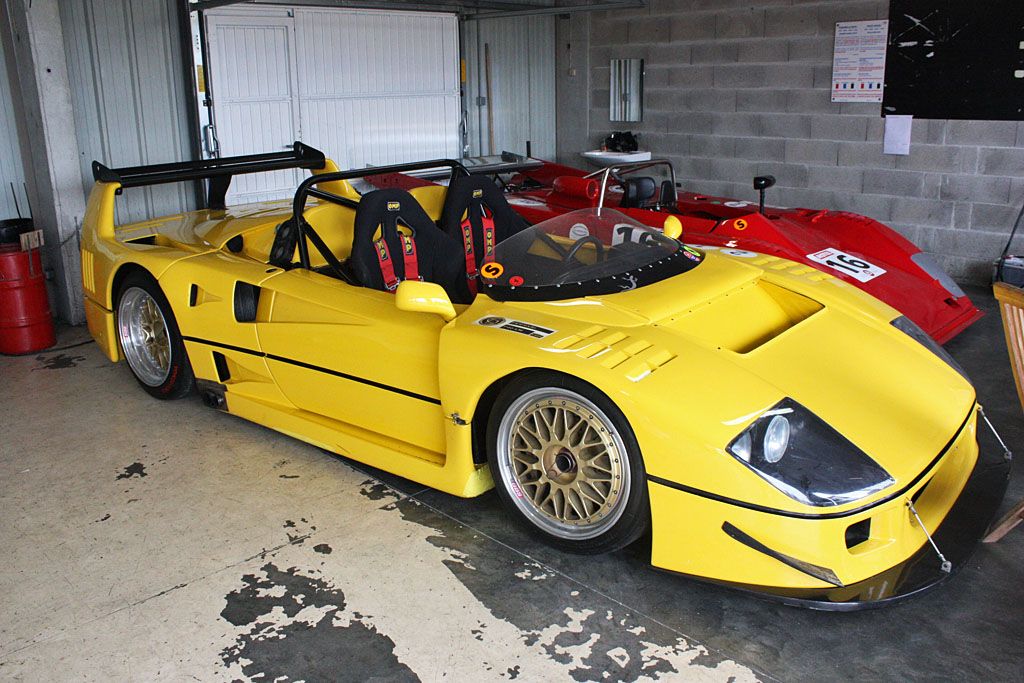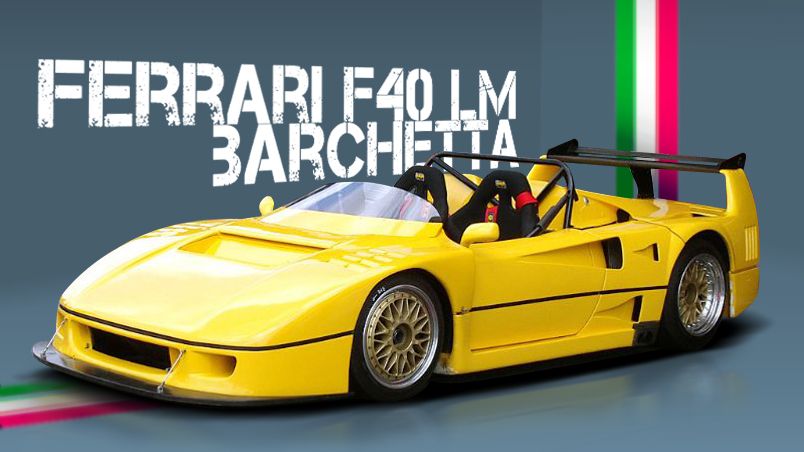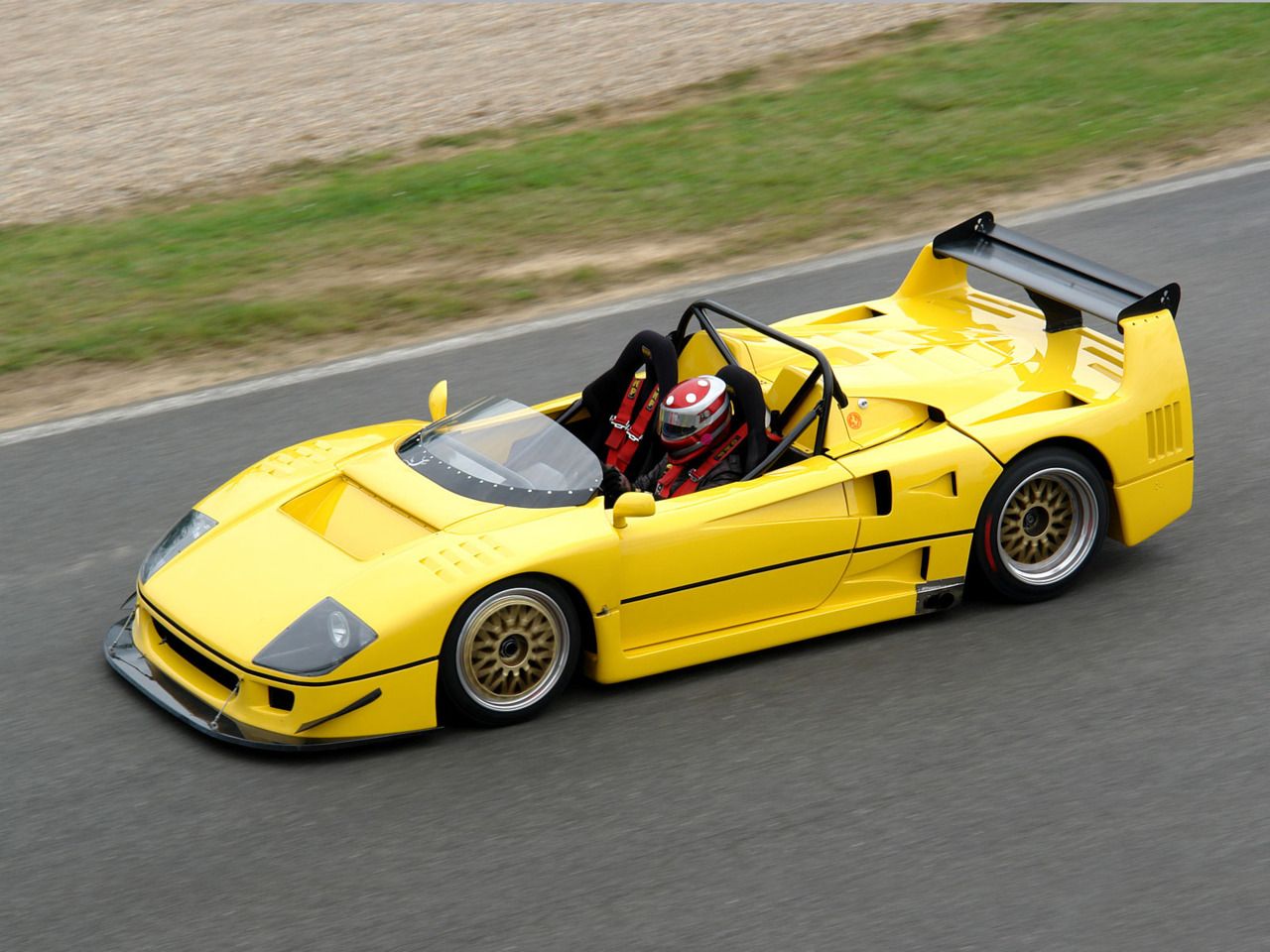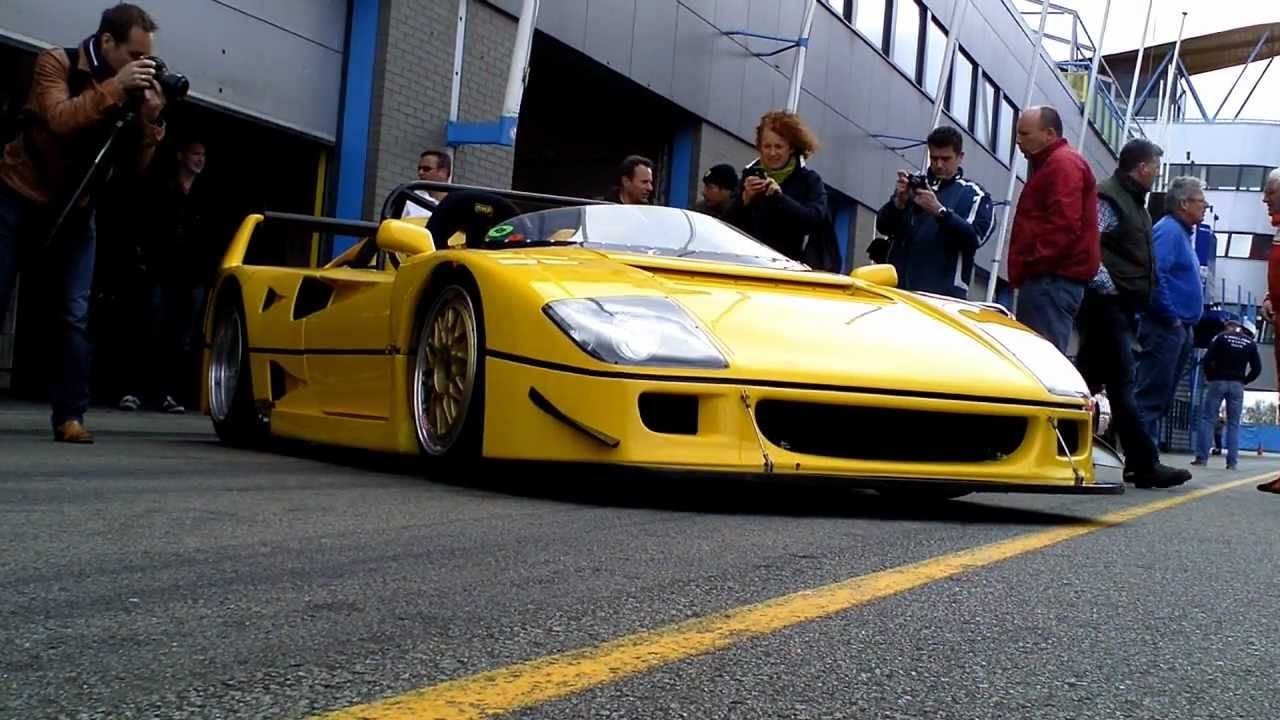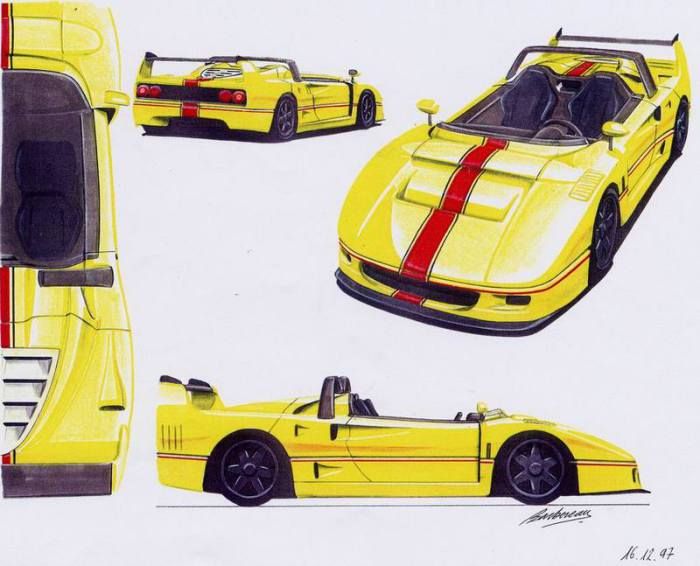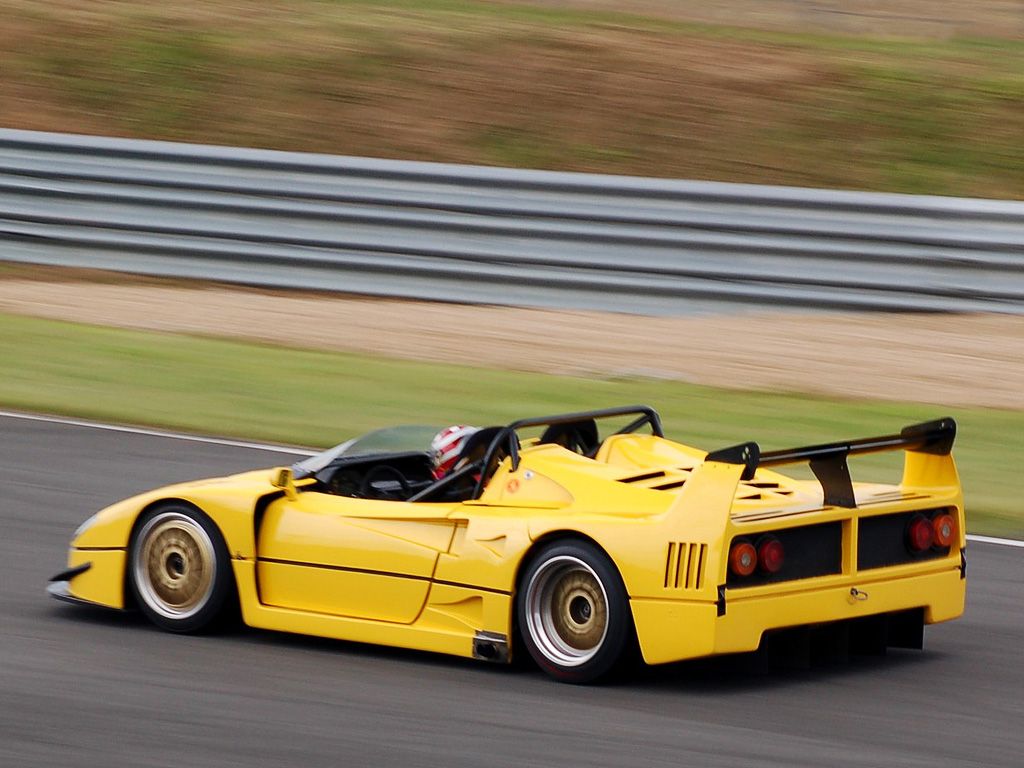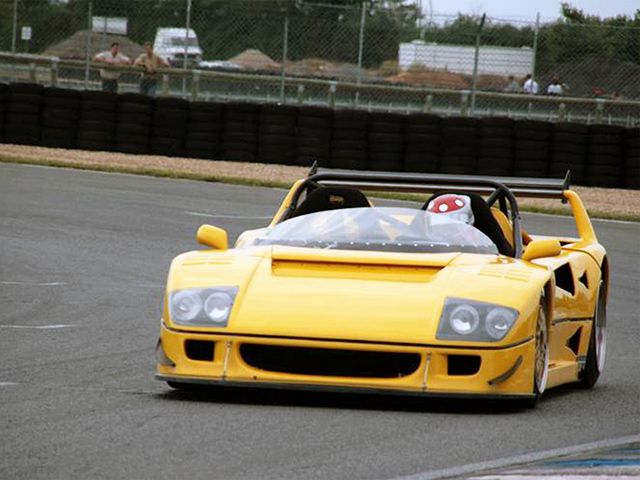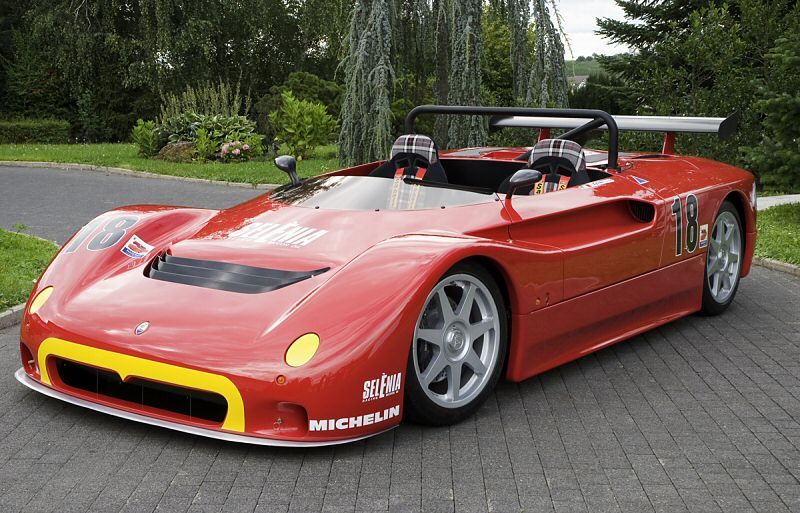A video that surfaced the Interwebz in April 2015, showing the Ferrari F40 LM Barchetta on TT Circuit Assen, the Netherlands, reminded me how classic cars->ke503 can become stunning one-offs at the hands of their eccentric owners. The story of this car goes way back to 1993, when former racing driver Jean Blaton purchased a factory-built F40 LM that was previously raced in the North American IMSA GT Series, but not a lot is known about it nowadays. The car is not even regarded as a real Ferrari,->ke252 mostly because Maranello was unhappy about what Blaton did to it, but that doesn't make it less impressive than its factory siblings. And I aim to prove just that in the full review below.
Should Ferrari had recognized the Barchetta as a true-blue F40,->ke434 it would've been the fourth official iteration of the nameplate, following the road car, the LM, of which only two were built for IMSA racing, and the F40 Competizione, also made for track use. All these cars were produced between 1987 and 1992, when Ferrari assembled 1,311 units at its factory in Maranello.
Continue reading to learn more about the Ferrari F40 LM Barchetta.
1989 Ferrari F40 LM Barchetta
- Make: Array
- Model: 1989 Ferrari F40 LM Barchetta
- Engine/Motor: V8
- Horsepower: 760
Exterior
Although it's still recognizable as an F40, the LM Barchetta underwent extensive surgery to become unique. The most obvious modification is the roofless, barchetta-style design, which also incorporates a flatter, lexan windscreen and a rollover cage behind the seats. By removing the roof, the owner also had to reshape the engine lid, now devoid of its trademark glass area, but sporting a more modern design thanks to its flying buttresses. I say "modern" because Ferrari began using a similar design much later. These changes were made under the supervision of Tony Gillet, also responsible for the Gillet Vertigo.
Blaton also opted for a set of BBS wheels instead of the stock racing rims of the F40 LM, and re-routed the exhaust. The standard car had three outlets exiting above the rear diffuser, but the Barchetta has them mounted before the rear wheels. The owner also removed the car's original red livery, dressing the F40 in a plain yellow suit similar to Ferrari's Giallo Modena.
The supercar is also missing the Ferrari and F40 badges, since Maranello demanded that they be removed. That's a common practice with Ferrari, which doesn't approve modifications to its factory cars. You know, the old "you can buy it, but you can't do what you want with it" routine.
Quite unusual, given the F40 LM was a race car, which typically see many upgrades throughout their careers.
Exterior Dimensions
|
Length |
4,535 MM (178.54 Inches) |
|
Width |
1,980 MM (77.95 Inches) |
|
Height |
1,150 MM (45.27 Inches) |
|
Wheelbase |
2,450 MM (96.45 Inches) |
|
Front track |
1,580 MM (62.20 Inches) |
|
Rear track |
1,545 MM (60.82 Inches) |
Interior
There isn't much info as to what was changed inside the cabin, but it's safe to assume Blaton settled for a full steel roll cage and a new pair of racing seats. Everything else likely remained standard F40 LM business, which means a simple, clean dashboard with a display behind the steering wheelf or all the vital information.
It's not like you need much more than that when driving an F40 around a race track.
Drivetrain
While powered by the same twin-turbocharged, 2.9-liter V-8 engine as the road car, the F40 LM was upgraded to deliver over 700 horsepower. The standard F40 came with 478 horses on tap. However, the cars that raced in the IMSA Championship were forced to run with intake restrictors, which meant the F40 LM used less power than it actually had.
But when Blaton modified his car, he removed the restrictor plates, and output went up to 760 horsepower, which means a 0-to-62 sprint of 3.1 seconds and a top speed of nearly 230 mph. For reference, the road-going F40, which held the record as the world's fastest production car from 1987 to 1989, needed 3.8 seconds to hit 62 mph on its way to a top speed of 201 mph. Also, in 1993, when Blaton turned the F40 LM into the Barchetta, the world's fastest production car, the McLaren F1,->ke1159 was able to reach a top speed of 240 mph. This one-off Prancing Horse was among the fastest vehicles of its era.
Other modifications included a more modern push-rod actuated coilover suspension system instead of the LM's standard double-wishbone suspension, and a tweaked exhaust system.
Drivetrain Specifications
|
Type |
Twin-Turbo° V8 |
|
Bore/stroke |
82 x 69.5 mm |
|
Unitary displacement |
367.03 cc |
|
Total displacement |
2936.25 cc |
|
Compression ratio |
7,7:1 |
|
Maximum power |
760 HP @ 8,100 RPM |
|
0-100 km/h (62 mph) |
3.1 seconds |
|
Top Speed |
370 KM/H (230 MPH) |
Prices
Although the oldest F40s are only 28 years old as of 2015, they have evolved into full-fledged classics, with the most expensive example to date changing hands for $1.43 million. LM-spec versions can get pricier than that, as a 1993 model sold for $2.2 million, becoming the most expensive F40 ever auctioned.
But despite having several bids to compare it to, the F40 Barchetta is impossible to evaluate, particularly because it is not regarded as a real Ferrari anymore. The vehicle was estimated to worth between $190,000 and $245,000 a few years back, but the owners failed to find a buyer.
Competition
Maserati->ke51 Barchetta
Developed around the same time as the F40 LM Barchetta, the Maserati Barchetta was also a mid-engined, open-cockpit sports car built with racing in mind. Considered a spiritual successor to the Maserati 450S of the late 1950s, the Barchetta featured a clean, almost wedge-like design and had a turbocharged, 2.0-liter V-6 engine mounted behind the seats. The race-spec Corsa model tipped the scales at only 1,980 pounds and had 311 horsepower, which translated into 0-to-60 mph sprints of 4.3 seconds and a top speed of 186 mph.
The Barchetta was mainly raced in the Grantrofeo Barchetta racing series in 1992 and 1993. The series included an array of events, mostly in Italy. Although Maserati intended to develop a road version, the project was halted at a late stage. Some of the 13 factory cars have been converted to road specifications. The Barchetta's frame survived in the De Tomaso Guara,->ke27 a V-8 powered sports car built between 1993 and 2004.
Although not as valuable as the F40 and F40 LM, the Maserati Barchetta has also become a collector's item.
Conclusion
The F40 LM Barchetta has a unique status among Ferraris. Although it's a one-of-a-kind, the fact that Maranello disowned it as an authentic F40 makes it less of a Ferrari to collectors. Despite this, gearheads will continue to see the Barchetta as one of the coolest F40s around, and there's nothing wrong with that. Seeing this open-top Italian on the race track is a delight. If you can live without the Ferrari and F40 badges, the LM Barchetta can also make for a great one-off purchase, as it is likely more affordable than a factory F40.

